The best PVA glue to buy: your complete guide to the crafting staple
Welcome to the fun, messy world of PVA glue! It’s one of the best glues for crafting and has probably been a staple in your home, past and present! Whether you’re into paper crafting, upcycling or scrapbooking, PVA glue is a crafter's best friend.
Despite PVA glue being a staple in our homes, most of us know very little about it. However, Gathered is here to change that! Our guide covers everything you need to know, including why it’s called PVA glue and even a recipe for making your own!
Grab your apron, it’s time to get stuck in!
What is PVA glue and what is it made of?
PVA glue is a vinyl polymer and is a type of thermoplastic. It has a rubbery consistency and is an adhesive, meaning it can stick to porous materials like wood and paper. It’s often white and dries transparent, but coloured PVA glues are available.
As to what PVA is made of? This is where it gets technical. PVA glue is made up of a combination of different chemical elements. Its chemical formula is (C4H6O2)n
but don’t worry, it isn’t toxic or harmful.
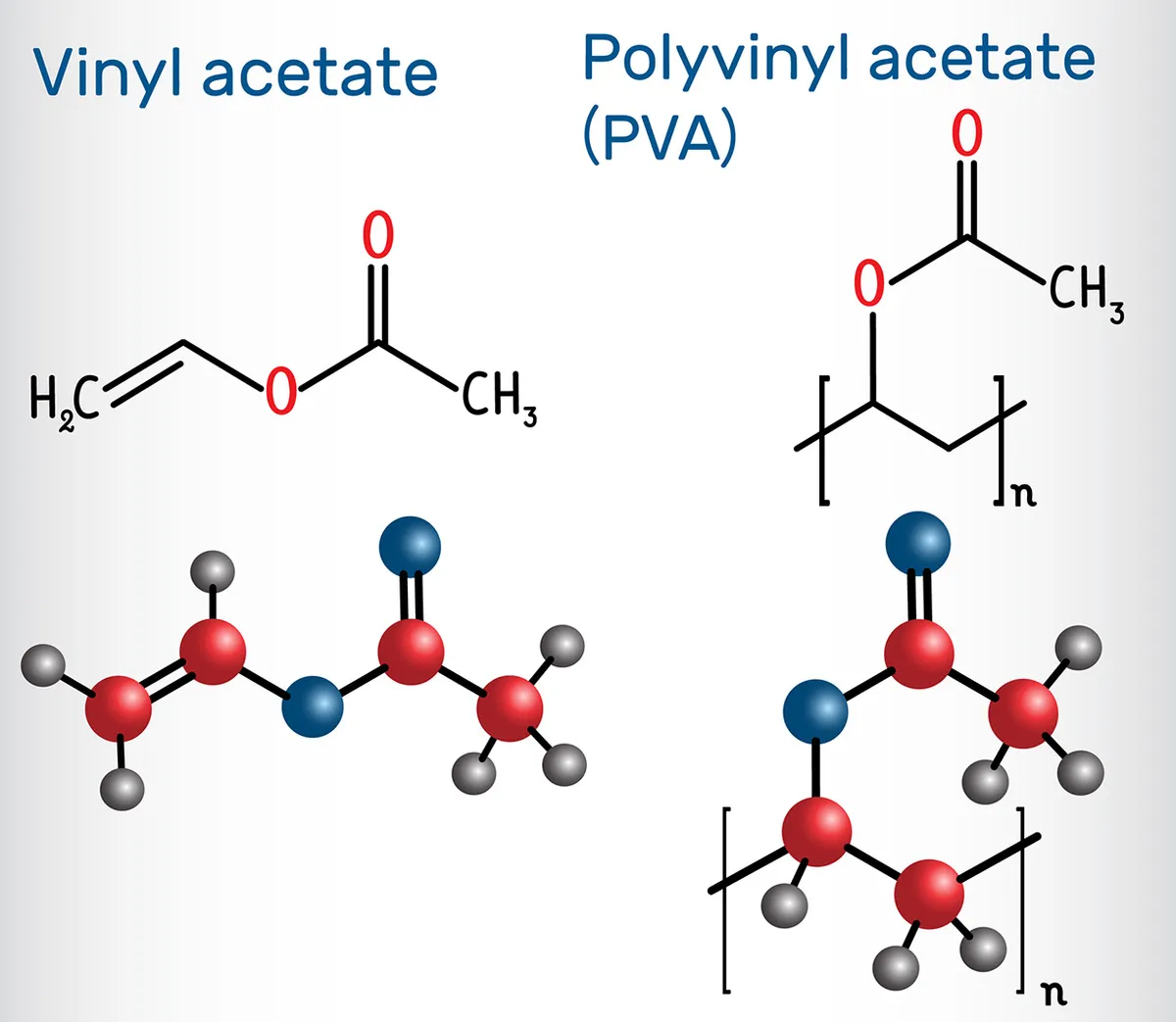
What does PVA glue stand for?
PVA glue stands for Polyvinyl Acetate. This is the name of the substance all those chemicals create!
What is the difference between aliphatic and PVA glue?
Aliphatic glue is made from aliphatic compounds whereas PVA glue is made of polyvinyl acetate. They’re both adhesives and commonly used in the DIY and crafting world.
There’s two main differences between aliphatic and PVA glue. Aliphatic glue is heat and water-resistant. PVA is neither of these things. Thanks to this, aliphatic glue is much stronger and is mostly used for woodworking and construction.
Aliphatic glue looks different too, it has a yellowy colour and a creamy consistency as opposed to PVA’s rubbery one.
Most crafters won’t need aliphatic glue. PVA works brilliantly on crafting projects and is much more suitable for home use.
Aliphatic glue should be used with care and proper protection as it can be toxic. It’s certainly not suitable for children!
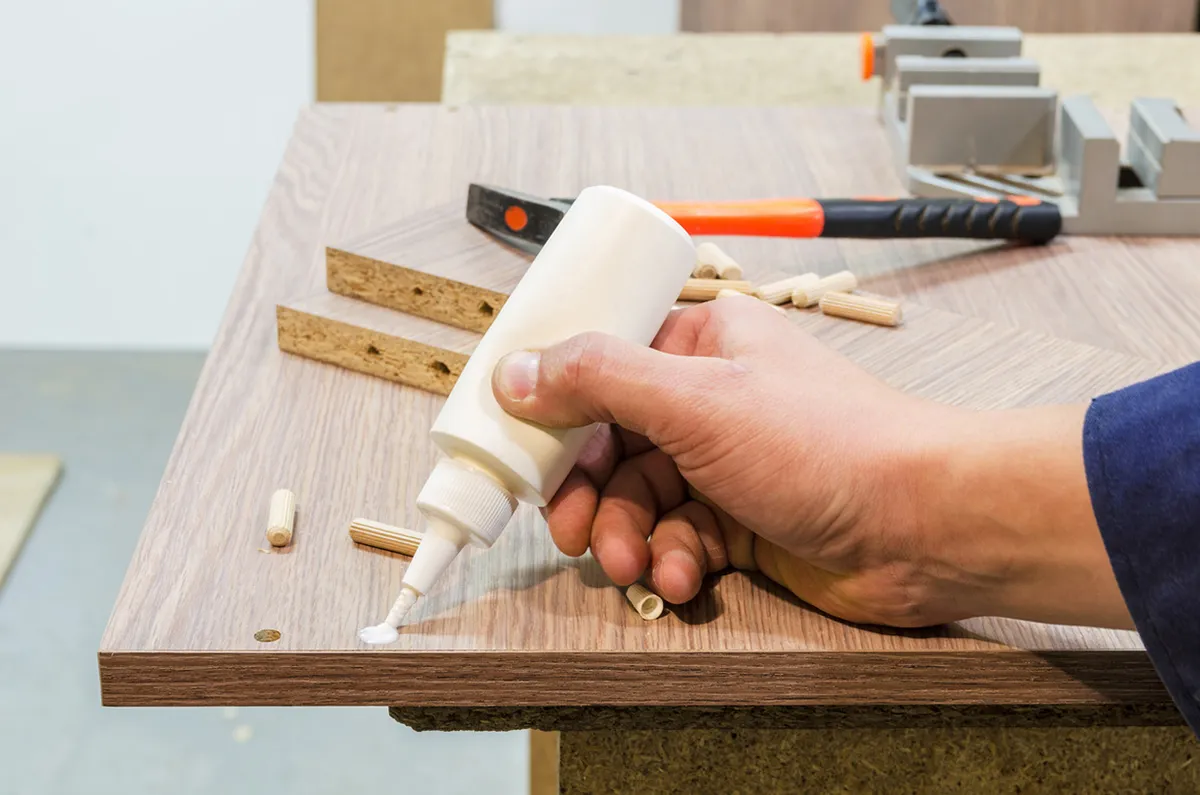
Is Elmer's glue PVA?
Yes, Elmer's Glue All is a PVA-based glue.
Most of Elmer’s glues use PVA as the main ingredient. They also contain a variety of other ingredients like ethanol and acetate.
They sell a range of PVA-based glues each designed for specific purposes. There’s glue suited for schools, woodworking and even special glues which are used in making DIY slime!
What is PVA glue used for?
Simply put PVA is used to stick things together! It’s an incredible substance which is used everywhere and in everyday life.
PVA glue can be used for fixing broken items, layering, creating crafts and home improvements. It’s used in many workplaces including carpentry, design and construction.
But we know and love PVA glue because it’s one of the best glues for crafting. It’s easy to use and easy to clean but also strong, allowing projects to hold together with ease. It’s used not only in the most obvious crafts (papercraft, bookbinding) but also in needlework, fibre crafts and textiles.
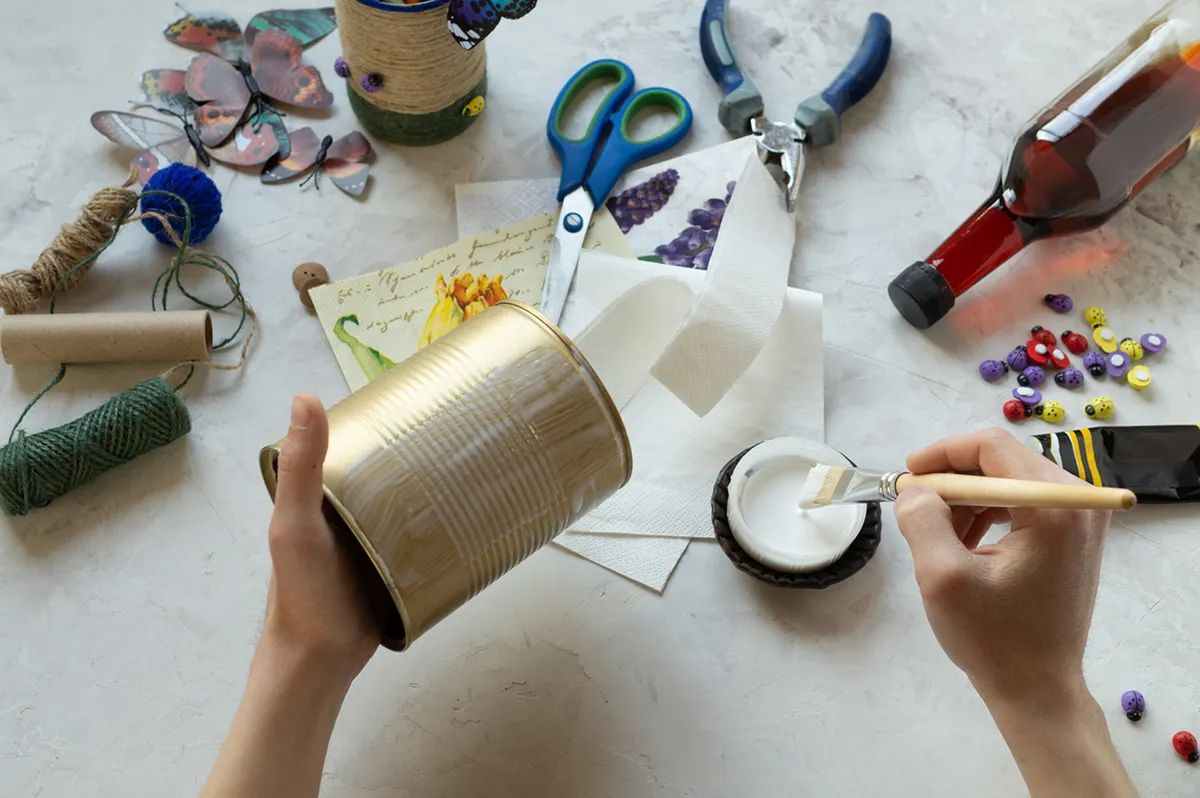
Where can I buy PVA glue?
You can buy PVA glue from a huge number of in-store and online retailers. Both independent craft stores and high-street giants sell PVA glue, commonly in their materials or stationary section.
You can pick up PVA glue from:
- Supermarkets (ASDA, Sainsbury’s, Walmart, Target)
- Craft stores (Hobbycraft, Joanns, Craft Warehouse)
- All-purpose stores (Wilkinsons, The Works, B&M)
- Hardware shops (B&Q, Robert Dyas, Hartville Hardware)
- Corner or convenience stores
- Online retailers (Amazon, eBay)
Since PVA glue is used so widely you really can find it anywhere. Brands will often sell their own versions as well as the PVA brands we all know and love.
If you’re looking for specific PVA glue brands, here’s some you can look out for or purchase online:
4 of the best PVA glues on the market
Now you know all about the world of PVA glue, it’s time to buy some! We’ve rounded up four of the best PVA glues, at a range of price points, so you can find the right one for you.
1. Mod Podge
Great for: Multi-purpose crafters
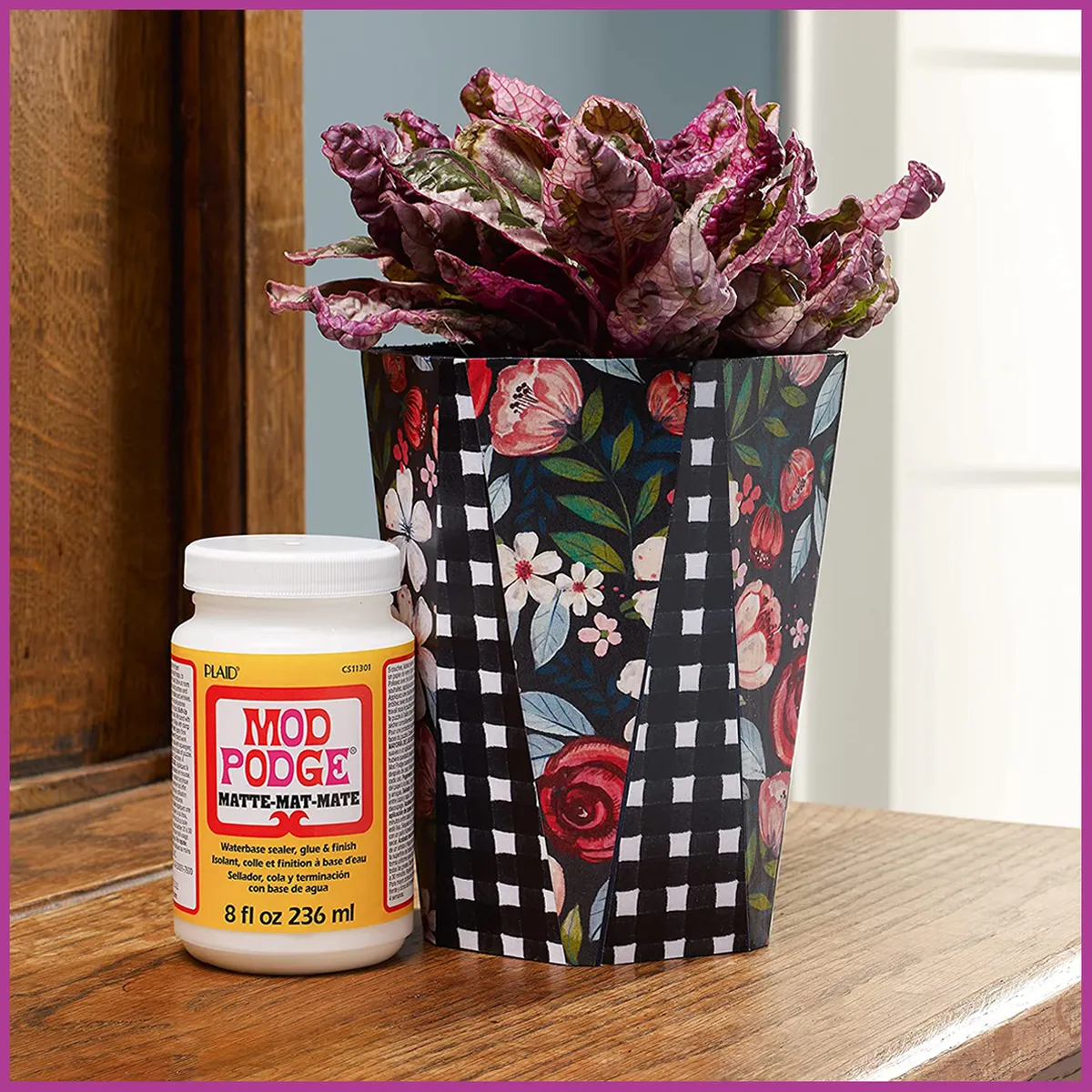
Mod Podge is a name we all know and trust. They sell a range of different craft glues, most of which are PVA based.
Their Waterbase Sealer, Glue and Finish is a brilliant all-round glue. It can be used on a variety of surfaces (wood, ceramic, plastic) and is both durable and secure. Mod Podge can be used for decoupage, and paper crafts and is suitable for kids.
If you already have Mod Podge in your stash but are unsure what you can make with it you’re in luck! Check out our collection of Mod Podge ideas which are full of fun, creative projects.
SQUIRREL_13081994
2. Craft Planet PVA glue
Great for: Kids
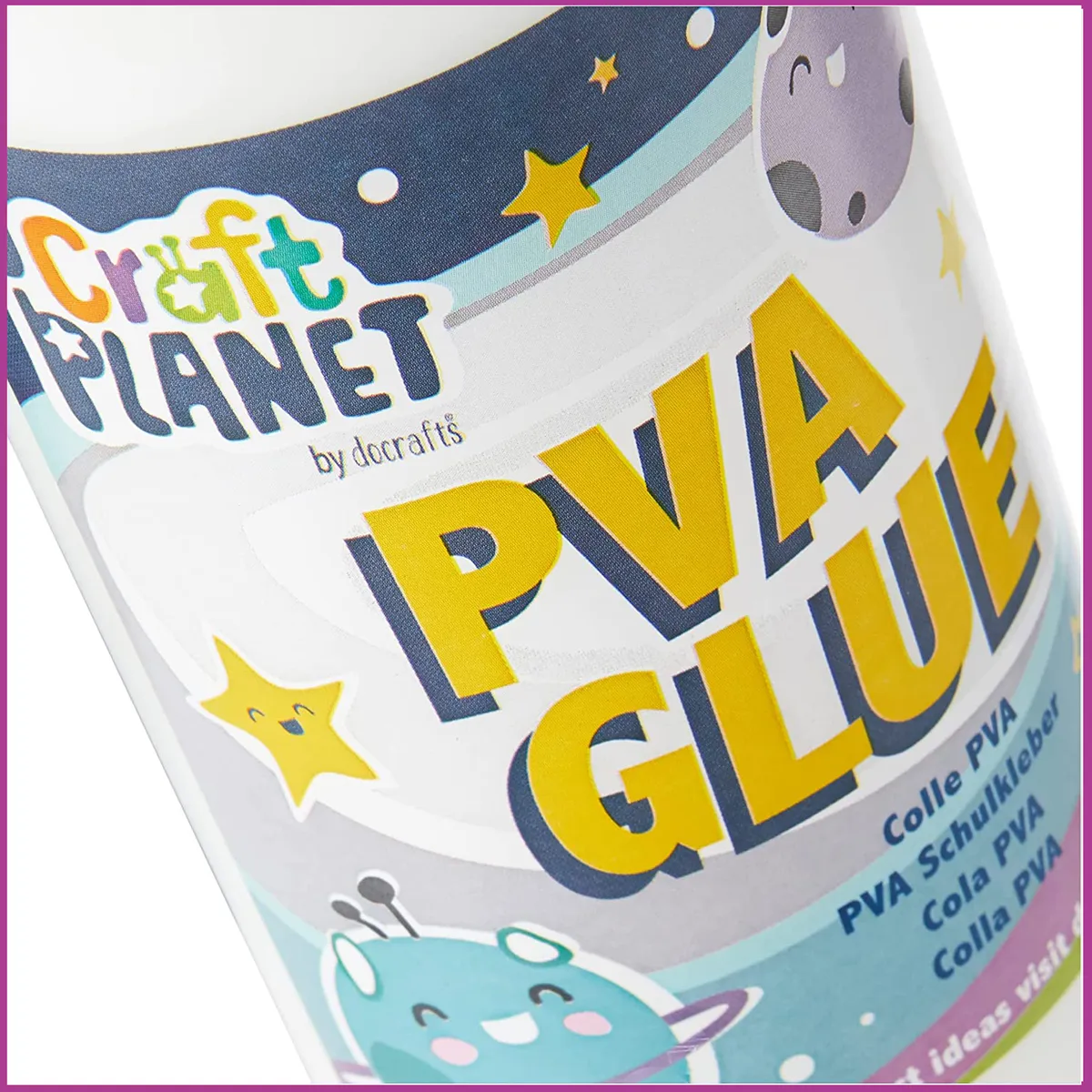
Craft Planet is the go-to brand for children’s crafts and they also sell some fantastic PVA glues. Sticky and non-toxic, their glues are perfect for little crafters or school classrooms. Of course, they can be used by adults too!
All their PVA glues are super affordable and one of the cheapest per litre we’ve found. This white PVA glue is just £3.80 for 500ml and can be even cheaper when bought in bulk.
SQUIRREL_13104567
3. Elmer’s PVA glue
Great for: Everyday use
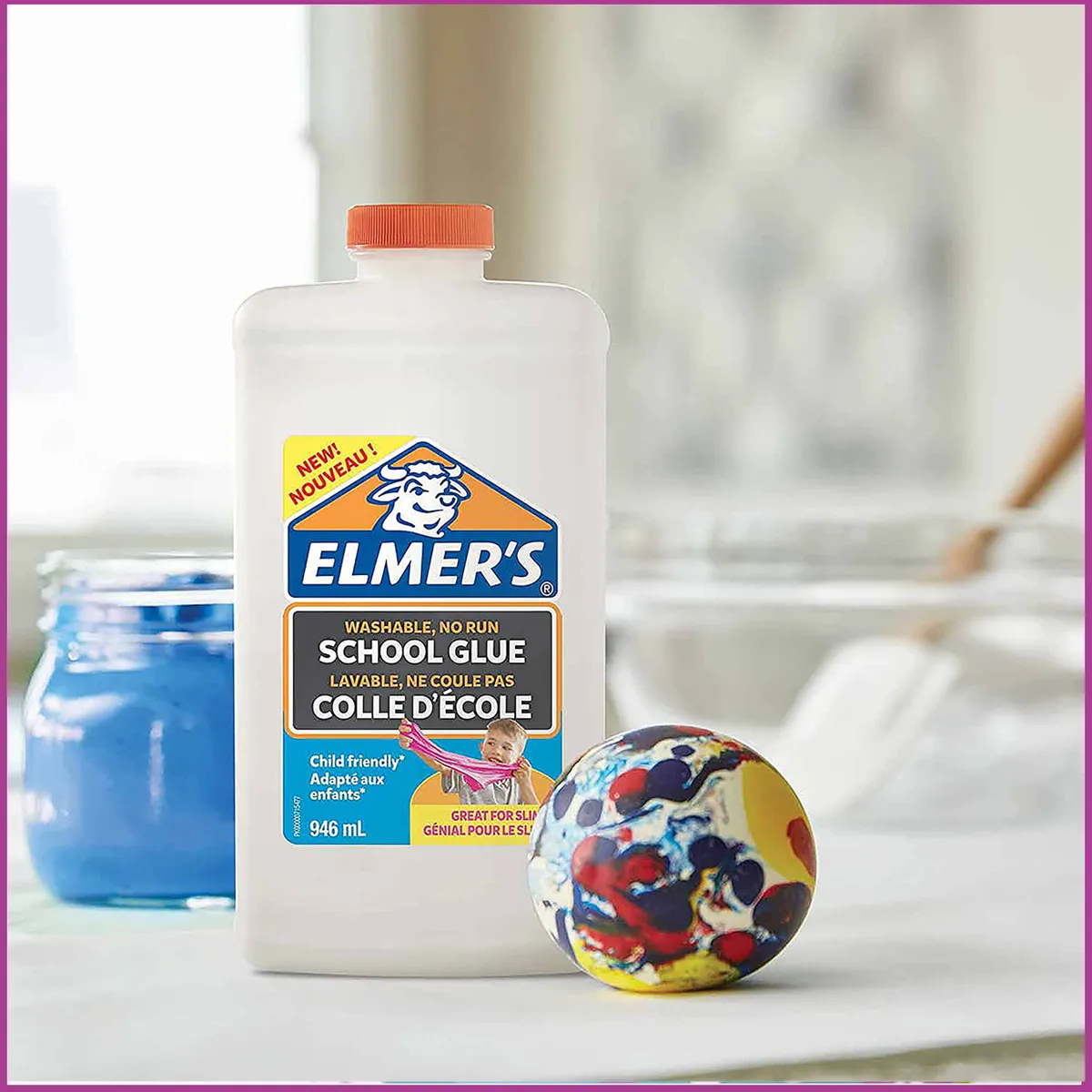
Household name Elmers is known for their reliable, no-fuss glue. They have a range of glues, some suitable for woodworking and others ideal for crafting.
Their School Glue is non-run, making it easy to clean. It’s also washable and child-friendly – a great all-rounder for a family home. Not only will it come in handy when crafting but it’s also useful for fixing broken items around the house!
SQUIRREL_13104003
4. Fast Tack PVA glue
Great for: Cardmaking and paper crafting
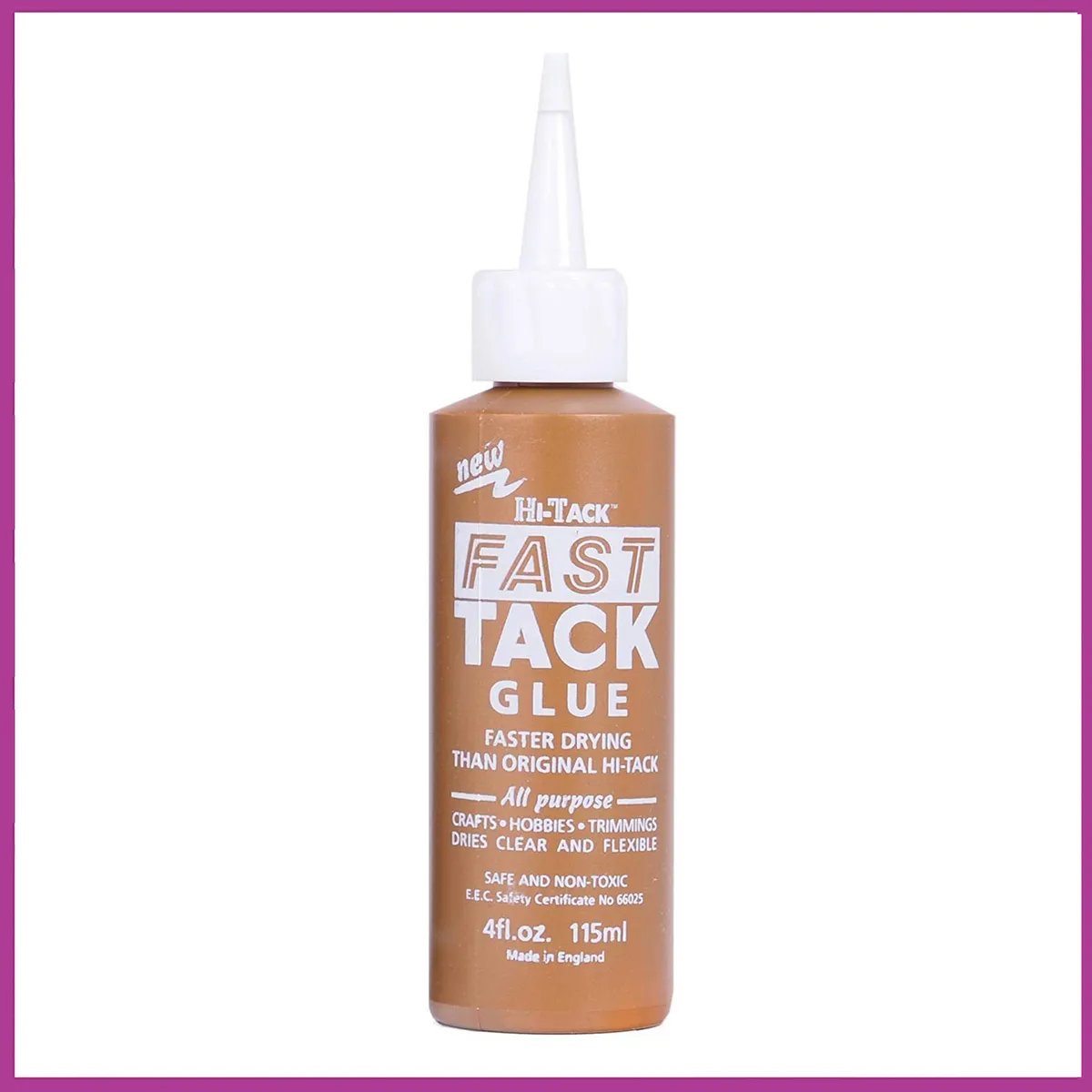
Fast Tack is the go-to choice for crafters who have deadlines. Claiming to dry in 2-3 minutes, Fast Tack allows you to continue working on projects without getting sticky fingers.
It’s ideal for crafts like quilling or cardmaking as they require you to layer lots of intricate details, glueing as you go. It dries clear so is perfect for securing items like sequins, beads and gems.
SQUIRREL_13081991
Looking for more specific craft glues?
If you’re interested in the world of decoupaging then you’ll need a different type of craft glue. Head over to our round-up of the best decoupaging glues.
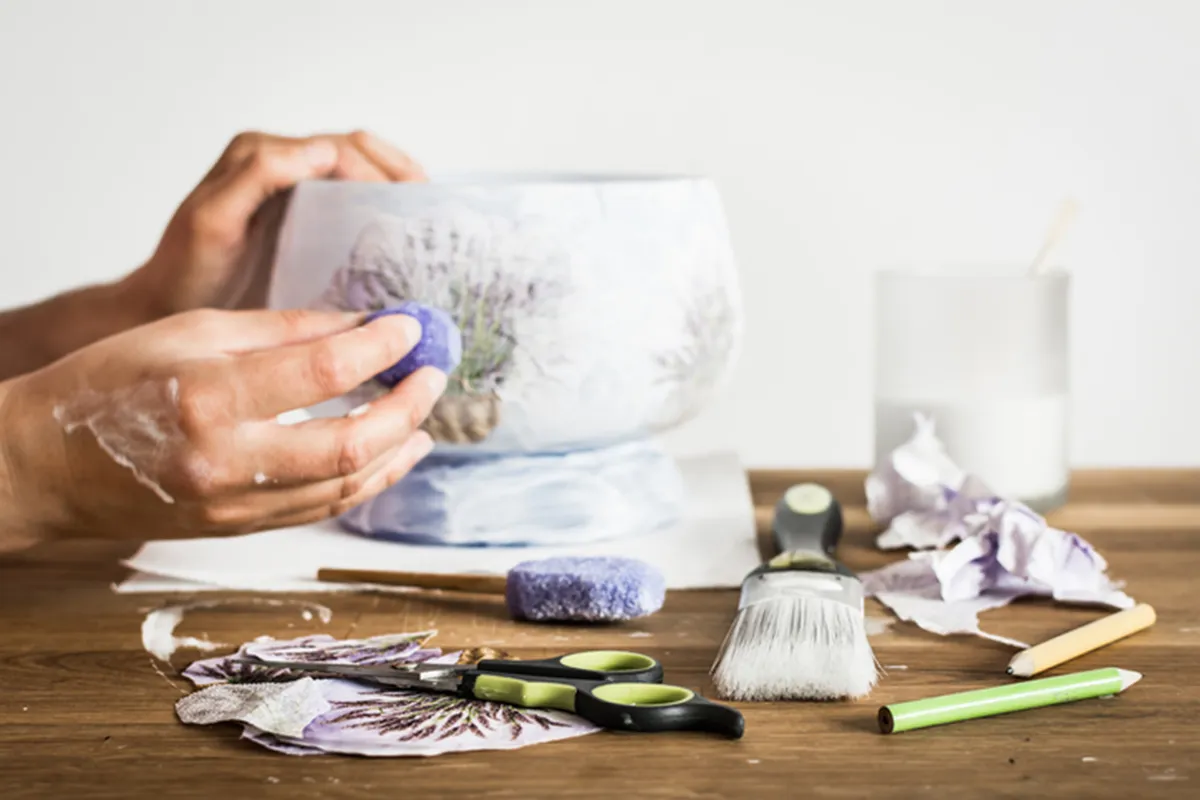
How to make PVA glue at home
Although buying PVA glue is easier, you can make it yourself. It can be made with some simple ingredients you probably already have lying around your home!
You will need:
- 1 cup water
- 2 tablespoons all-purpose flour or cornstarch
- 1 tablespoon sugar (not necessary but it improves tackiness)
- 1 tablespoon white vinegar or lemon juice
Method
- In a saucepan, whisk together the flour (or cornstarch) and sugar.
- Slowly add the water while whisking to avoid lumps. Continue until the mixture is smooth.
- Place the saucepan on medium heat.
- Stir continuously. After 5-10 minutes, the mixture should have the consistency of a thick paste.
- Once thickened, remove from the heat and stir in the vinegar or lemon juice.
- Cool to room temperature.
- Once cooled, transfer it to a clean, airtight container.
- Your PVA glue is now ready to use! Store in the refrigerator for up to 1–2 weeks.
If you’d like a video tutorial to help you, watch MommyOf3xo’s YouTube video. She tests out a different recipe and shows you that it really does work!
How long does PVA glue take to dry?
PVA glue tends to be dry after 30 minutes.
Remember, this may differ depending on the brand of PVA glue and thickness of the layer you put down.
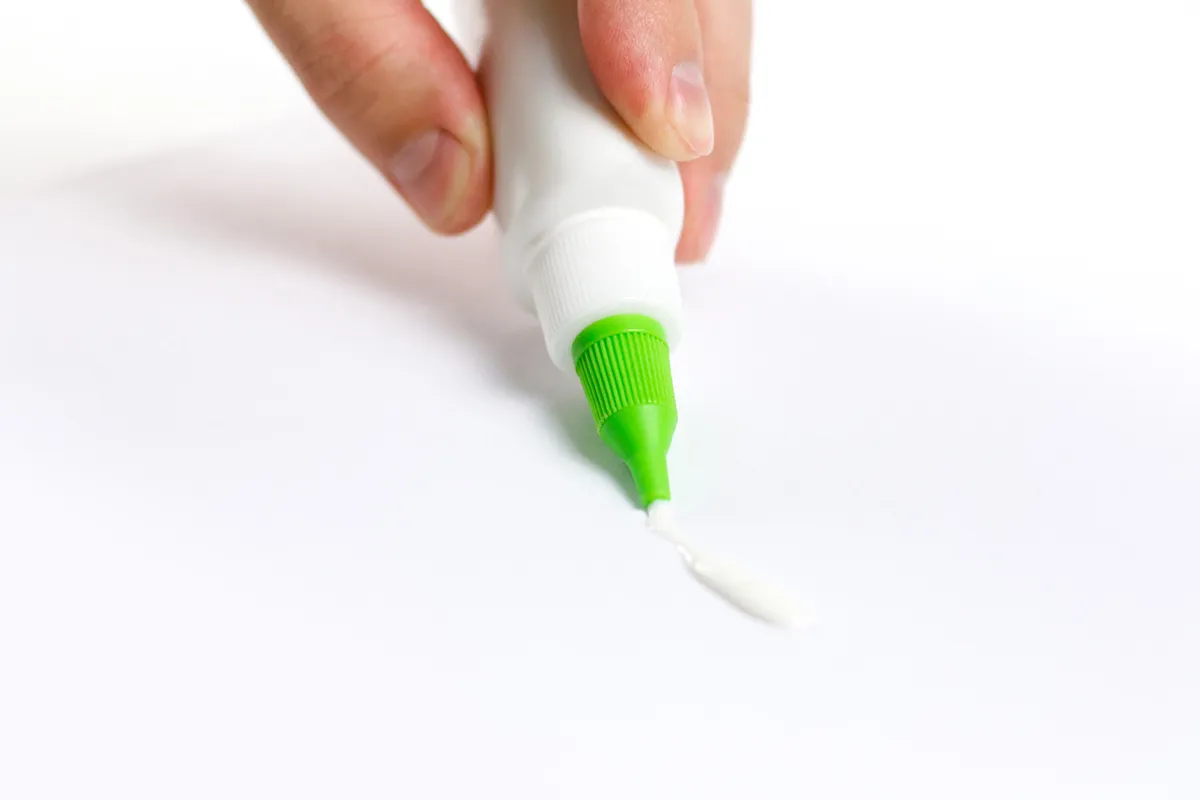
How to remove PVA glue
You’ve bought or made your PVA and now you’re crafting! PVA glue is fab but it’s also messy. It can easily get on your clothes, surfaces and even carpet. But never fear – we’re here to help you get squeaky clean.
Here’s how you can get PVA glue out of the most common surfaces.
How to remove PVA glue from clothes
In order to remove glue from your clothes your first step is to be patient! It’s tempting to scrub at the wet stain but this will make it worse. Wait till it has dried, and then you can begin scraping the glue off.
Make sure you scrape gently with a blunt object (the back of a spoon works well). You should be able to get off most of the PVA glue with this.
In order to get the remaining glue out of the fibres, scrub carefully with an old toothbrush. You can use warm water and a little washing powder or washing up liquid.
Give the item a quick soak and wash as normal! The PVA glue should have disappeared and your clothing is as good as new.
How to remove PVA glue from wood
Spilt PVA glue on your lovely wooden dining table? Don’t worry, it’s easy to clean.
You can either wipe the wet glue off with a damp cloth and warm water, or you can wait for it to dry and peel it off.
If the warm water isn't doing the trick, try wiping a small amount of white spirit on the glue. If it's stubborn, leave a dab of the white spirit on the glue and wait. It should dissolve the PVA glue easily! Then you can wipe the leftover residue with warm water.
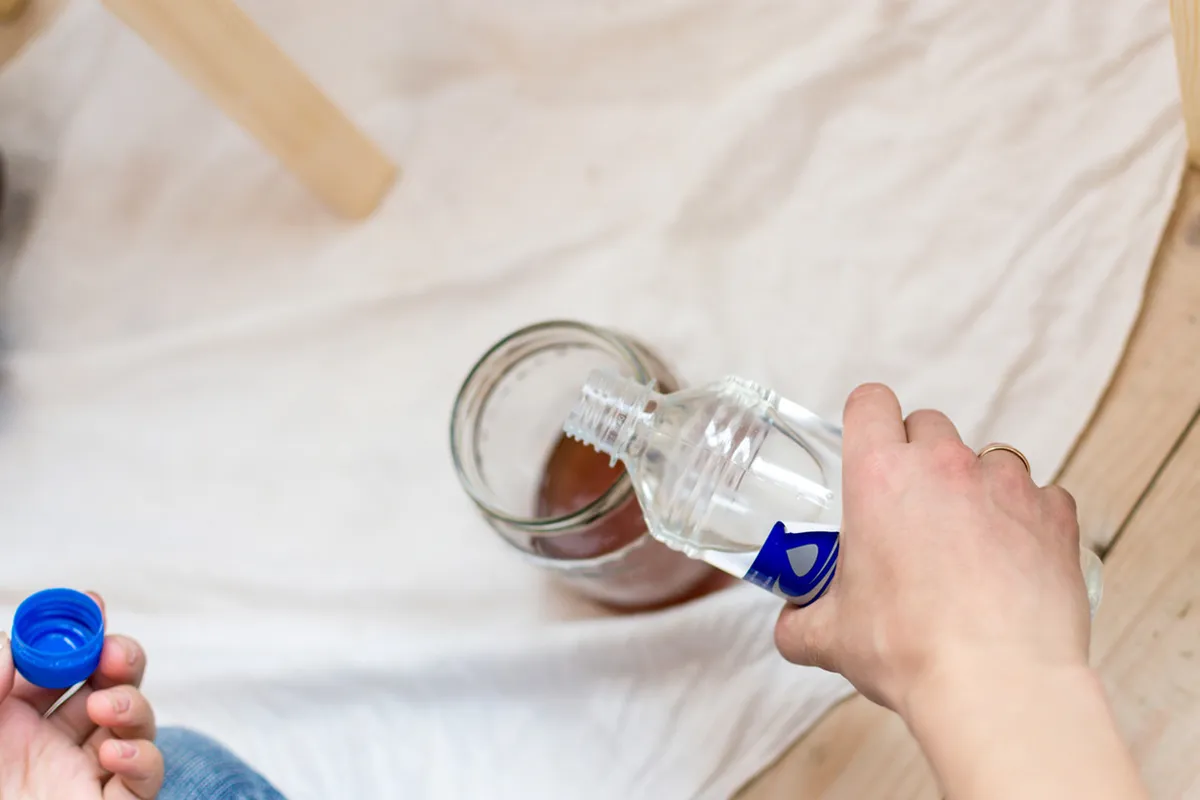
How to remove PVA glue from carpet
If you’ve split PVA glue on your carpet all you need are two things – a cloth and some nail varnish remover.
Firstly you need to absorb as much of the PVA glue as possible. You can use paper towels, a cloth or a sponge to do this.
Then you can use nail varnish remover to get rid of the PVA left in the fibres. Just press a small amount onto your cloth or towels and press over the stain. This should lift the glue from your carpet.
Once the PVA glue has lifted and the area has dried you can clean it with any carpet cleaner you have handy. Clean with a small amount, leave to dry again, then vacuum over the space.
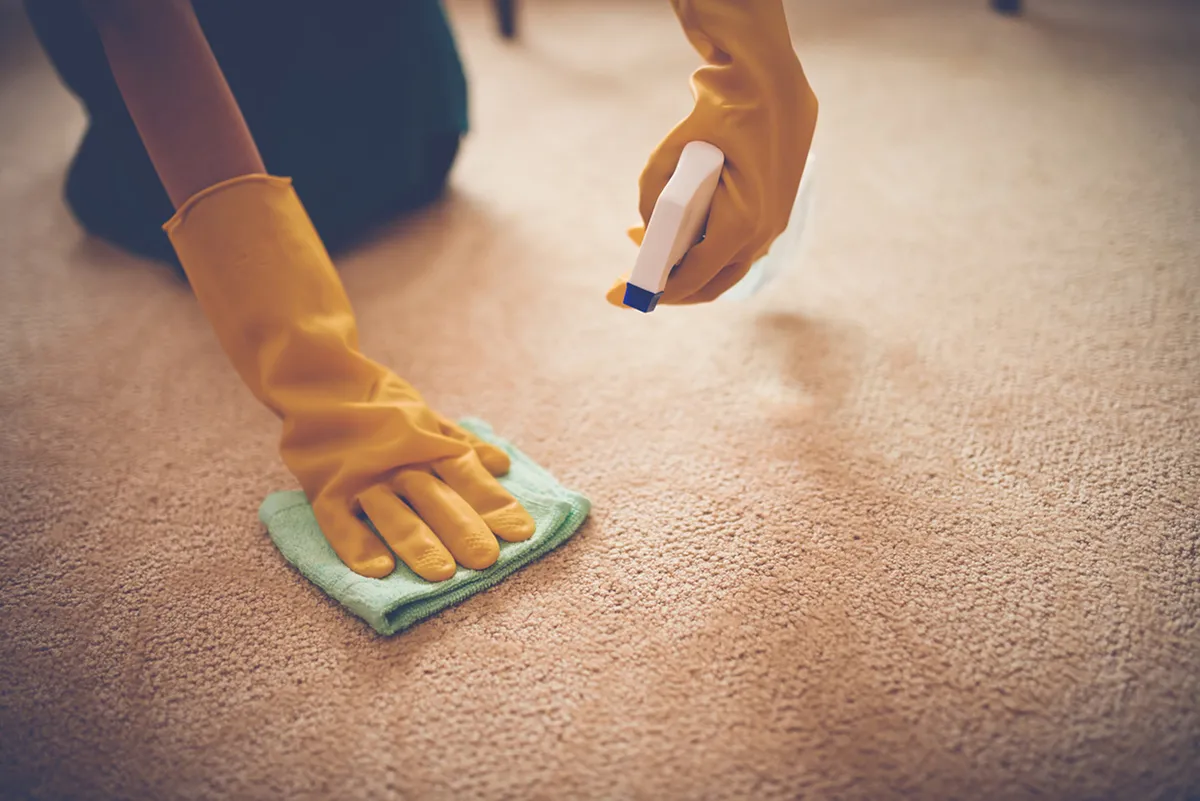
How to remove PVA glue from walls
Removing PVA glue from your walls is tricky. The process is very simple but be warned that it’s likely you’ll be left with either a stain on your walls or damage to the paintwork. Despite this, there’s a few different approaches you can take when trying to remove PVA glue from your walls.
Firstly, you can wait for it to dry, then peel it away from your walls. This is the easiest way of removing it but there is a risk that your paint may be damaged.
Alternatively, you can use a tiny amount of washing-up liquid diluted in water to wipe away the mark. Remember to use a very small amount or you may end up with water marks on your wall instead of the glue mark!
You can also try the nail varnish or white spirit method (above). Just use tiny amounts at a time and hopefully, this will break down the PVA enough for you to wipe clean.
Make PVA glue a staple in your craft kit
PVA glue really is a great all-rounder. Practical and free of harmful toxins, it’s a glue you can keep in your home and craft with easily. It’s simple to use, simple to clean and family-friendly!
Finding an affordable PVA glue will help you complete your craft kit of essentials and we guarantee you’ll find yourself reaching for it more than you think.
All that’s left to do now is find some projects to use it on!
Put your PVA glue to good use with Gathered
Now you have all the information, it's time for the fun part – creating! Test your new PVA glue out by making our DIY photo album.

